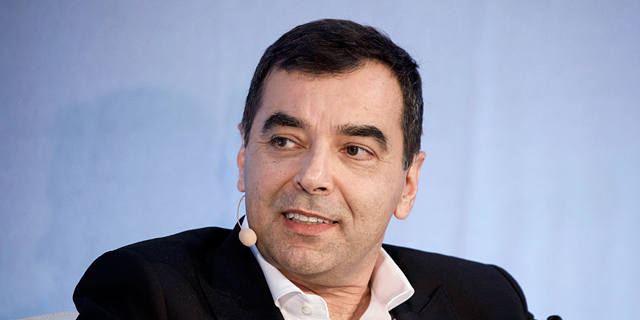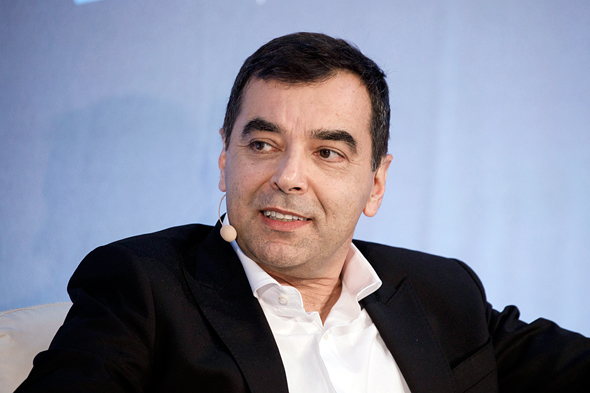
Interview
Clear Cut Separation Strategy Can End Corona Crisis in Three Months, Says Mobileye CEO
Amnon Shashua, co-founder and CEO of Mobileye, breaks down his exit strategy which separates high and low-risk populations to create herd immunity while allowing the economy to get back on track
Diana Bahur-Nir | 16:04, 29.03.20
Can we contain Covid-19 without placing the economy on lockdown? That is the main question Amnon Shashua, co-founder and CEO of Jerusalem-headquartered automotive chip developer Mobileye, is trying to answer. Last week, he tackled the question in a blog post, co-authored by Shai Shalev-Shwartz, a computer science professor at the Hebrew University of Jerusalem.
Calcalist caught up with Shashua to talk about the plan he proposed and ask why he believes that the country-wide lockdowns currently being implemented across the world are not the best way to fight off the virus. "Few countries can bear the price of economic paralysis for such a long period and the result could end up being irreversible," Shashua told Calcalist. "Furthermore, with this method it is still unclear what will the exit strategy be to prevent a second wave outbreak, as we are currently seeing in South Korea, Taiwan, and some parts of China. Therefore, a clear exit strategy which can be implemented immediately is required, which will allow to mark a target date for the removal of the constraints of the lockdown and to kick-start the economy." Shashua and Shalev-Shwartz offer an exit strategy based on the model of quarantine according to risk groups. "In this model, the high-risk population is isolated from the low-risk population until the latter achieves herd immunity. They will continue practices of social distancing, but to the extent that will allow the existence of the financial system," Shashua explained. "The feasibility of this model depends on the ability of the health system to cope with the serious cases among the low-risk population," said Shashua, who offers a mathematical model which decision-makers can use in order to calculate if their country can indeed handle such a situation.” Shashua explained what triggered the writing of the piece. “I sent an email to all the employees of Mobileye and clarified: we won't be putting anyone on leave without pay, we aren't firing anyone, you will receive a full salary, work full-time and at full productivity, emphasizing working from home and business as usual. Mobileye is a strong company,” he said. “To my surprise, I received responses that people are still afraid to lose their jobs, scared that they will be fired. And then I said to myself: If people feel like this in a company as strong as Mobileye, which is a subsidiary of an even stronger company like Intel, what is happening in the rest of the economy? “That triggered me to take a deeper look into the matter and not just sit on the sidelines passively, but use my scientific skills to see how I can have a positive effect," he said. Shashua complemented the way Israel is handling the crisis, but emphasized that flattening the curve is not a long-term solution. "If there is a place on earth from which to escape this crisis that is Israel. I trust the decision makers and Israeli society,” he said. “The goal here is not to criticize, but to give decision makers tools to think creatively. Flattening the curve is a tactic, not a strategy. You can't just do that because it is like riding on the back of a tiger, in the first few minutes you feel like you are controlling it, but then it will toss you off. The vaccine won't be ready for another year and a half, and even then we won't be the first in line. So we are going to flatten the curve for the next year and a half to two years? So I suggested we do a thought experiment. There is selective quarantine. We split the population into two groups of low-risk and high-risk and that can give us a mathematical method by which to manage this process." Shashua explained that his strategy requires evaluating and checking how many carriers there are in the low-risk group and then checking the resources the health system has, for example, the number of ventilators. “From there we came up with an equation which can tell if the number of ventilators we have is enough to contain this crisis,” he noted. Shashua said the high-risk population will need to continue to remain at home for the time being. That will allow the low-risk population to get back to work with certain security measures. “The goal is that the low-risk population will infect each other and reach herd immunity. After that, we will be able to release the high-risk population as the low-risk population is already immune. Anyone who feels at risk can stay at home. This gives us an exit strategy that at the end of which all the population is immuned even before we reach the stage when we have a vaccine.” Shashua believes people can handle the tough time ahead, but only if they can see a light at the end of the tunnel. “The population can cope with difficult situations, but you need to talk to the people as equals and give them an exit strategy. There isn't any exit strategy right now. Are we going to flatten the curve from now until the vaccine arrives? To locate the infected, isolate them, and anyone close to them?” he said. “On the other hand, if you say that we are going to have three difficult months, that the country will hand out grants so that the economy doesn't collapse, but after that it will all be over, people will be able to accept that. Right now the fear is that the decision makers don't understand what they are doing. They know a quarantine is required, but what next? Until there is no vaccine we remain vulnerable to more breakouts." Shashua is hoping his strategy will be implemented across the globe. “We need to solve this problem for everyone, not just Israel. The first thing I did was send the article to my colleagues at the Massachusetts Institute of Technology (MIT). And on Tuesday I will be giving a Zoom lecture on this. I've also contacted political advisers to the Governor of New York. I'm trying to see how we can provide tools, not just in Israel, but across the world. Israel's economy is based on export. Even if our economy is working, but the European or American economies are crushed, we will also be crushed. The goal is to give all decision makers an exit strategy from this situation."